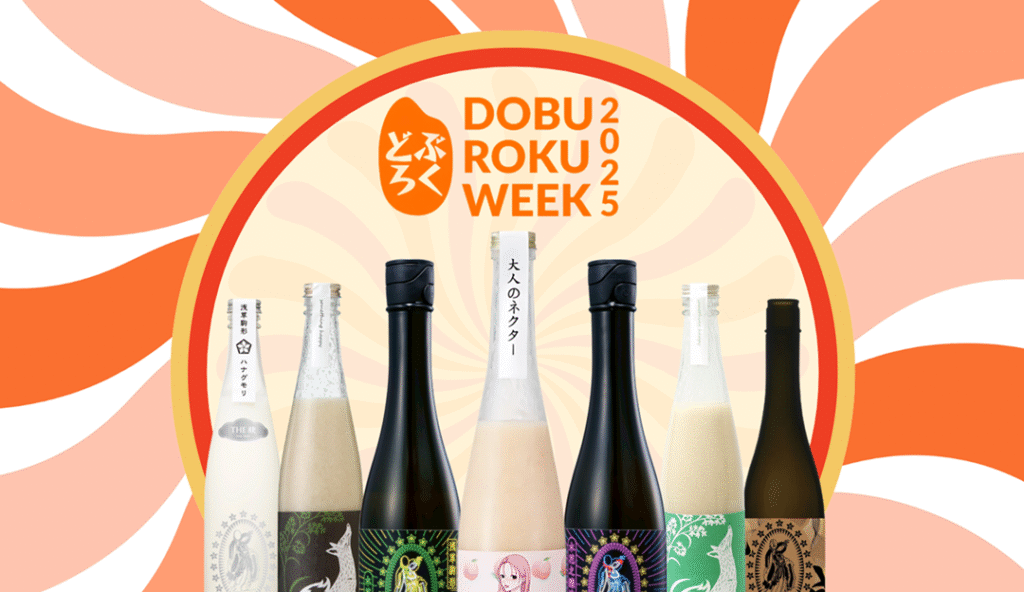WE TURNED RICE INTO ALCOHOL!
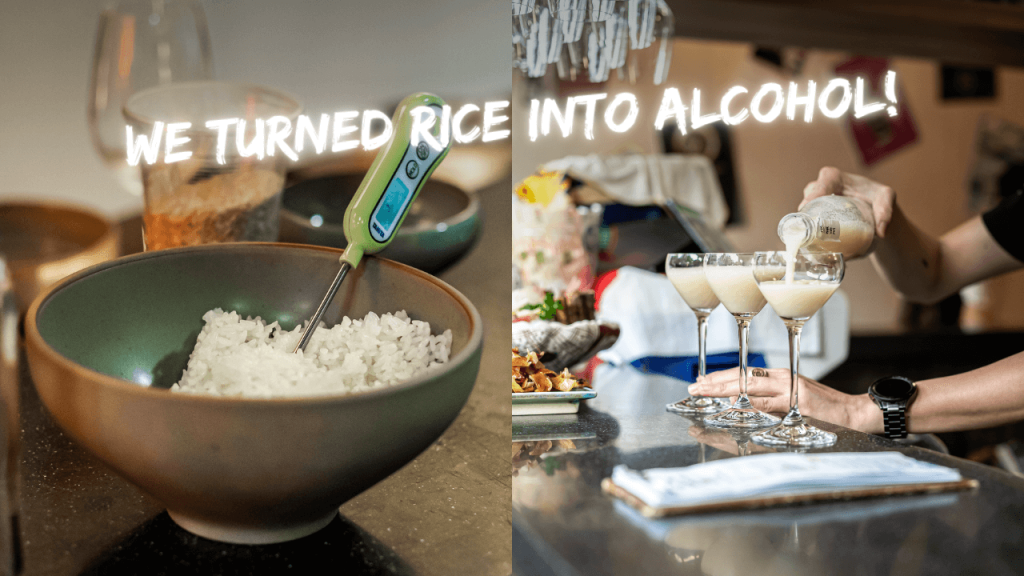
Sake lovers, gather ’round! You like sake, you love drinking it, but have you ever ventured into the raw, porridge-y world of Doburoku?
“But wait,” you say, “WTF (what’s that fermenting) is Doburoku?”
Doburoku is the hidden treasure of the modern sake scene. It’s a brew with a cloudy appearance, chewable rice bits, and a fresh fizzy mouthfeel. This modern yet ancient beverage is, and has always been a bit of a rebel – a farmer’s homebrew turned moonshine during prohibition, and today, its at the heart of the modern craft sake movement.

Imagine a drink that looks like porridge, or rice pudding. It shares a taste of yoghurt with a touch of sweetness, and chewy rice bits for texture. Without doburoku, there may never have been sake..

At OMU NOMU, we host Doburoku Making Workshops periodically, to honor the history of doburoku and its importance in sake making history, as well as to give participants an insight into the basics of sake brewing and an understanding of the beverage. Attendees get to roll up their sleeves and, from scratch, make doburoku through the various stages and components of the sake brewing process.

As a general guideline, here’s what we use:
Dry Koji: The key ingredient of saccharification – turning rice starch into sugar.
Akita Komachi rice: We generally use table rice, though sometimes we might use sakamai too!
Brewing Yeast: Usually wine yeast, but we’re in the process of trying to acquire sake yeast!
Natural Japanese Water: Because good water makes good sake.
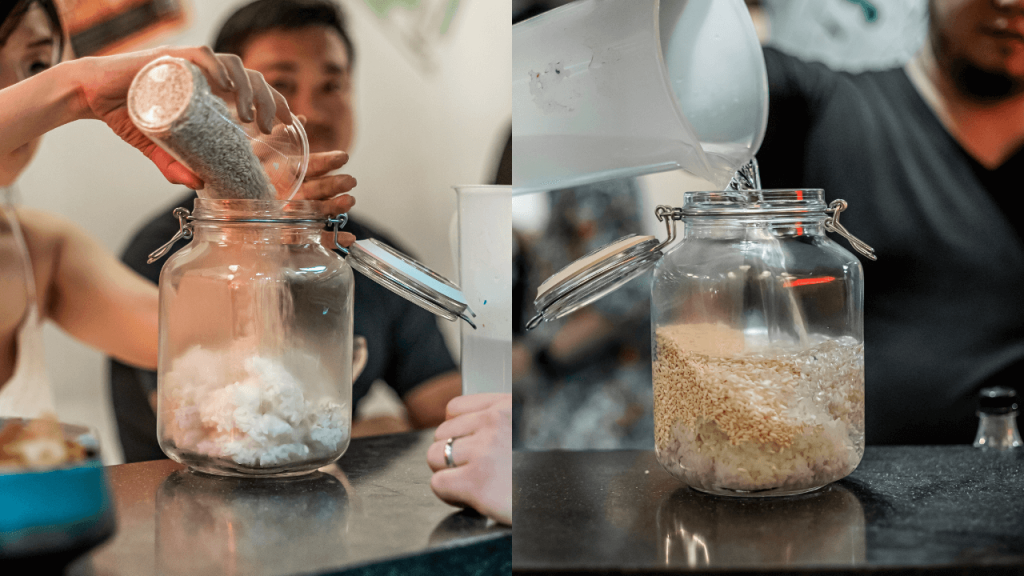
Let’s explain briefly to entice ya – the brewing process!
- We begin by washing, drying and sanitising all materials (including your hands) before beginning to brew. This important step prevents putrefaction.
- We make a quick shubo (yeast starter) by warming amazake and allowing the yeast to propagate. This process can take up to an hour, so patience is key.
- Then, we build the moromi. Rice, water and the shubo are mixed together. This is where we explain the magic of multiple parallel fermentation, and the differences between sandan-jikomi in sake making vs ichidan-jikomi in traditional doburoku making.
- Lastly, we wait for signs of bubble action! Bubbles form as fermentation begins, and is a pleasant sign. As we wait, this is when we drink, and field any questions you might have about doburoku or sake brewing in general.
- When it all looks good, it’s time to bring your moromi home and allow fermentation to occur over the next week or so!
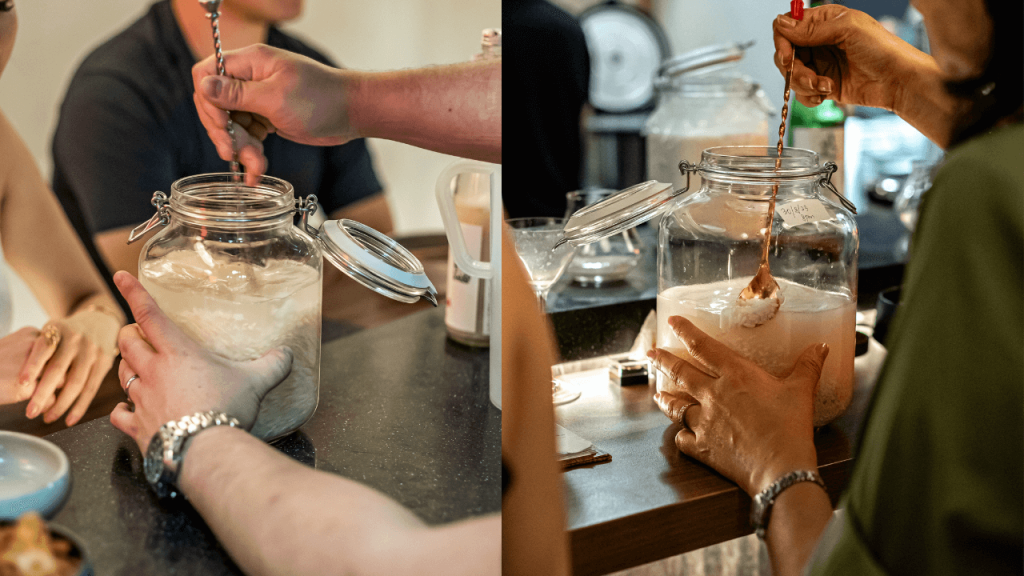
We always recommend keeping the moromi in the fridge, or a wine chiller. Cold temperature brewing keeps things low and slow, and restricts yeast activity which in turn produces those lovely fruity, floral notes (aka. “ginjo”) .
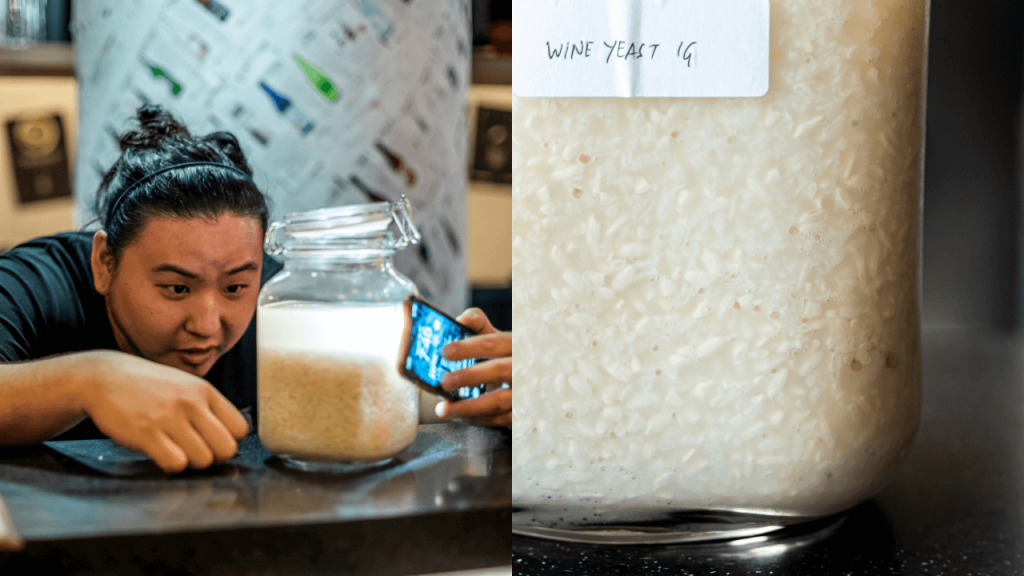
The entire journey from brew to bottle takes a patient 9-12 days. Trust us; good things come to those who wait.
Here’s some tips from us:
- Stir it up: Give your brew a daily stir (with a clean utensil) just to create even distribution of the raw materials.
- Taste, taste, taste: Tasting your moromi daily is knowledge and experience which only brewing can give you. Pay attention to changes in alcohol levels, sweetness, acidity and even texture as the days go by.
- Bubbles mean business: Seeing bubbles? Good. If you don’t, there might be a problem which we’re happy to troubleshoot with you.
- Your brew, your way: Stop the brew early for a sweeter touch, or let it go longer for a higher ABV and a drier style.
- Pasteurisation!: Once your Doburoku reaches flavour perfection, you’ve got choices. Pasturise your doburoku, or, don’t, and you’ll have yourself a nama genshu!
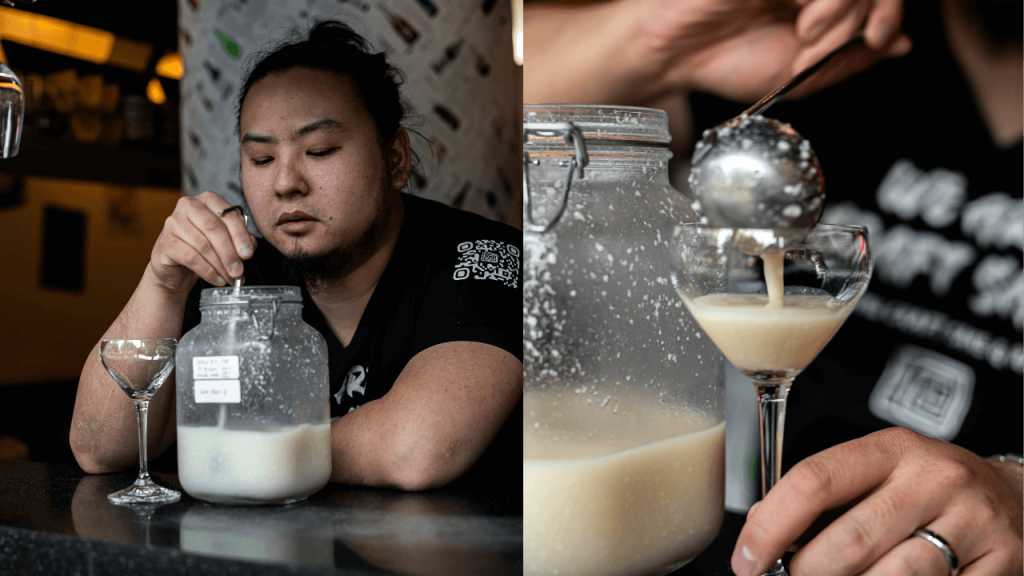
What would your Doburoku taste like?
Buckle up for an exciting flavour ride with Doburoku. It’s not your average brew; it’s a daring and audacious brew adventure that combines the comforting notes of creamy rice pudding with the playful kick of yoghurt-like tang.
As you journey deeper into your glass, be prepared to discover delightful fruity undertones and bask in the richness of pure ricey goodness.
Chilled to perfection, it’s the ultimate cool, creamy companion you’ve longed for.

And before we sign off, we’ve got a cool recap video down below if you have missed out on our social post. Cheers to a brewtiful day ahead!
About OMU NOMU Craft Sake & Raw Bar
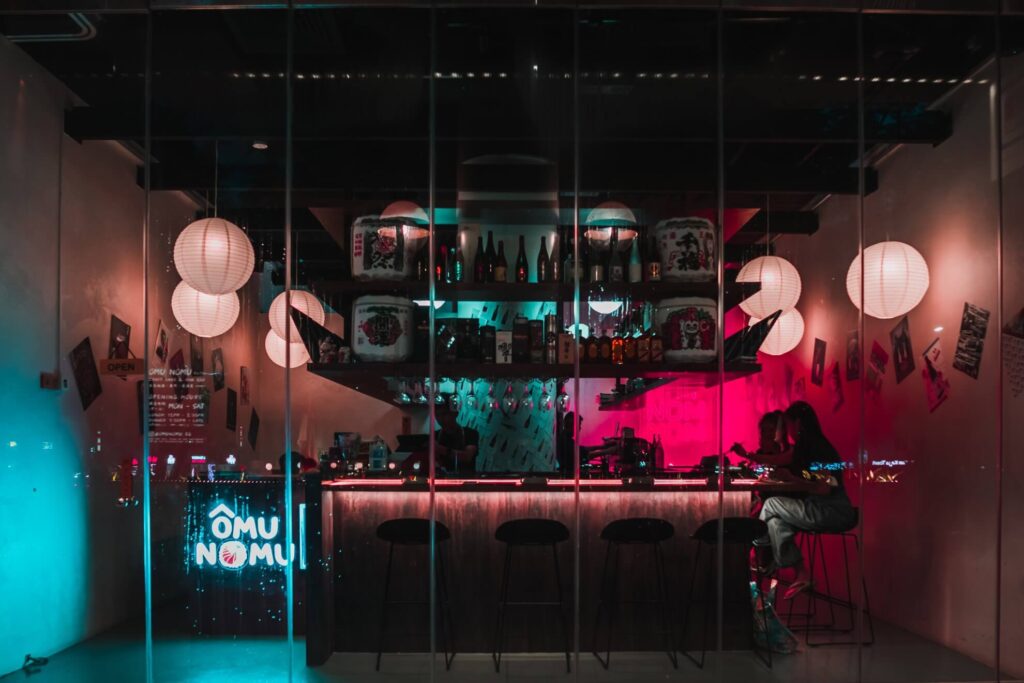
OMU NOMU has always been about promoting Craft Sake to the masses and to give our guests the opportunity to explore, learn and understand more about craft sakes and their specialities. It’s for this very reason that OMU NOMU keeps its sake list small and rotates weekly.
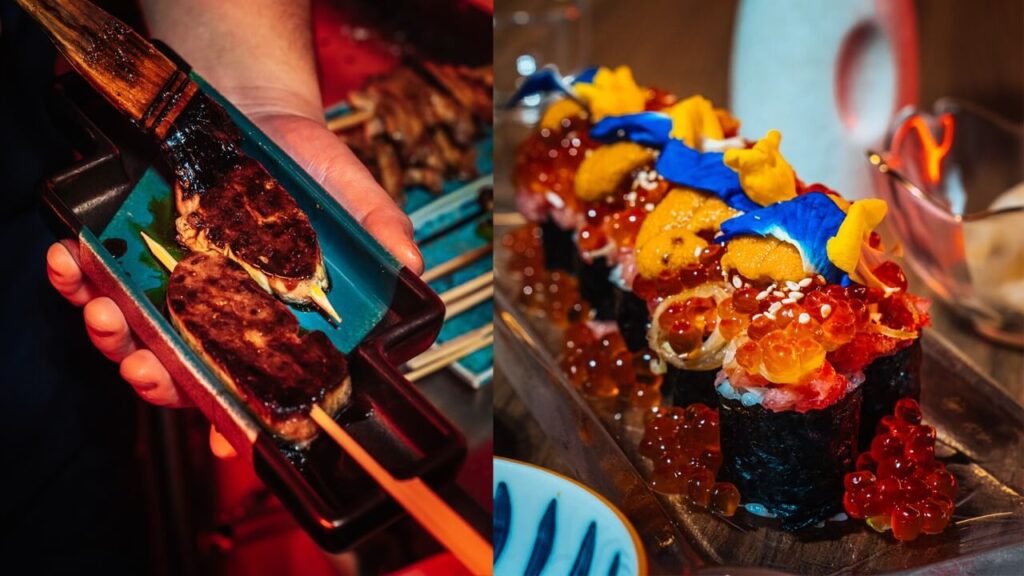
We support small breweries and small-batch brewing, from Muroka Nama Genshu (unfiltered by charcoal, unpasteurized, undiluted) styles, to traditional Yamahai and Kimoto styles, to ancient styles like Doburoku and Bodaimoto, and Koshu (Aged) sakes. To support a craft sake list like this, our food pairings have to be considered at a different level as well. Hence, in planning our food menu, OMU NOMU creates dishes that encompass robust flavours whilst paying homage to traditional techniques, from binchotan-grilled kushiyaki to sashimi to even filling overloaded maki that pair extremely well with our sake.
Address: 302 Beach Rd, #01-08 Concourse Skyline, Singapore 199600
Operating hours: Monday-Saturday, 12pm-2.30pm; 5.30pm-12midnight (Closed on Sunday)
Facebook: www.facebook.com/omunomu.sg/
Instagram: www.instagram.com/omunomu.sg/
Website: https://omunomu.sg/

